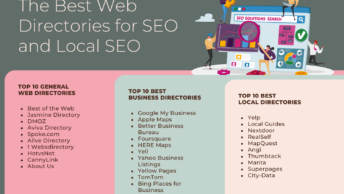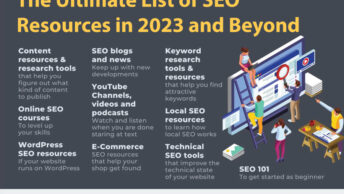
For some years, webmasters have been following the Google dictum that the more links that point to any given web page, the more authoritative that web page must be. This is the thinking behind the PageRank approach to valuing web pages. In turn this will mean that the web page will tend to be higher in ranking for appropriate keyword searches and thus should see greater visitor traffic.
Google has become so dominant in search that visibility in Google search results has become a key priority for webmasters. So the popular wisdom was to get as many links as possible and there are still a host of so-called SEO experts who are ready to help you do this.
Unfortunately, this lemming-like rush to get as many links as possible has fouled the scene and Google has had to attempt to clean-up the Augean stable mess of links that has resulted. That was why they claim they instituted the Penguin update in February 2011: to gut many of these links from low quality websites.
LOW QUALITY LINKS
These websites are low quality because many of the web pages on these websites give little of value to anyone who chooses to view them. Here are some of the factors that signal low quality web pages:
- Articles contain typos and mistakes in grammar
- Author is unknown or has no online reputation
- Thin content merely copies other online web pages
- Articles provide little useful information to viewers
Since viewing such web pages is unlikely to give a good user experience, Google puts in efforts to ensure such web pages will not appear in keyword search query reports. The Panda updates, which were being instituted in parallel with the Penguin update, were particularly effective in suppressing these low quality web pages.
This raised the question of what websites could be used in attempting to get acceptable links. The simple answer is to have higher quality web pages that will give good user experiences.
Ideally if you can have others develop such material and provide it for free, then this is a very effective way of generating the required high quality web pages. This is an example of third party content.
In a similar way if the blog articles encourage comments from others, then this again can provide quality third-party content if strong moderation is used to cut out any comments from spam merchants.
Matt Cutts Has Confirmed That Google Accepts High Quality Guest Posts In Blogs
Matt Cutts has produced a series of videos to answer questions that webmasters have on search and Web spam. In particular one of them shows his answer to the question, What is Google’s view on guest blogging for links? His key example seemed to be a no-brainer answer, when he indicated that:
If you have awesome bloggers such as Lisa Barone, Danny Sullivan, and Vanessa Fox writing articles for you, that is totally fine and is a “great win.”
That is one end of the dimension of acceptability and clearly at the other end we have all these low-quality web pages. Links from these low-quality web pages will do nothing to improve the ranking of web pages in Google keyword search queries.
On the other hand, you will be very lucky if you can get star authors writing for your blog website. What is the cut-off in deciding which third party content is acceptable and which should be refused?
Is Avoiding Inferior Quality Third Party Content All It Takes?
It may be that if you can avoid inferior quality third party content, that will ensure that your web pages are not downgraded in Google’s search algorithms. Search engines cannot do literary criticism and perhaps same old / same old articles may be good enough for search engines.
That is true provided search engines are only analyzing language in mechanistic ways and do not factor in how users react to these articles. It could be that now or in the near future search engines will incorporate signals from social media. If this is so, then we may need to look at web pages which will perform well in social media.
Social Media Requires Articles That Engage
When sharing articles on social media such as Twitter or Facebook, the articles must be worth sharing. If not, at a minimum you will start to alienate your friends and followers who may decide to stop following you. More importantly, it is ideal if your followers in turn share the same web pages.
In the best of all worlds you will be starting a viral explosion for your really good articles. This requires a different definition of high quality than is sufficient for search engines. The most useful notion is perhaps that your articles should engage your readers. They must find something new and different in what they see to get engaged.
Ways Of Writing Articles That Engage
Writing articles that engage is a huge subject and here we will only set out a line of attack that will set you on the right road. It involves three steps that you should cycle around to fine tune what you will produce. The three steps are:
- Think of a title that explains what the article is about and is likely to get people clicking on that title in a keyword search engine report page (SERP).
- Do a search on Google for that title and check what others may have written on this subject
- Write the text part of a tweet (around 125 characters) about the proposed article that is likely to be retweeted
You should cycle around these three steps until you believe you have created the best possible title/tweet package you can on the subject. This is a great way of focusing on your target audience and writing something that will work for them.
In summary, in going for high quality by social media standards rather than avoiding low quality as defined by the search engines, you will produce the best possible quality for the search engines too.





